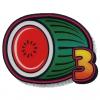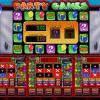Romx - thx for the reply, if you use the notion that you pull a "random" ball out of a bag of balls numbered 1-9 and return that ball, the odds of you pulling 12345 and 12234 in order are exactly the same (1/9*1/9*1/9*1/9*1/9). The odds only change if you don't put the ball back, there fore your not measuring melons with melons.
Correct, but if you have more than one of certain numbered balls, then the odds change. If your bag now had nine balls numbered 1,2,2,3,4,5,6,7,8 then the odds for drawing 12345 change to 1/9*2/9*1/9*1/9*1/9.
The other assumption that seems to be made is that the value of a win is determined by the generation of a single random number (i.e. one pick from the bag). A machine can still be purely random if you determine the win level on a mumber of picks.
For example picking balls 1-9 three times:
A 50p win could be gained if 1,2, or 3 are selected every time. The odds are 3/9*3/9*3/9 or one in 27.
On the other hand a Jackpot would be awarded if three 9's are pulled out in succession. The odds now are 1/9*1/9*1/9 or 1 in 729.
The machine is now still purely random, but you are now more likely to get a 50p win over a jackpot (27 times more likely).
Replace the monetary amounts with fruit symbols, and you can determine which symbol will drop in on each reel every spin.
As an afterthought old mechanical machines got round this issue by putting more of one symbol on each reel than the others. These were still 'totally random' by definition, but you had more chance of spinning a cherry in than a Jackpot.






















